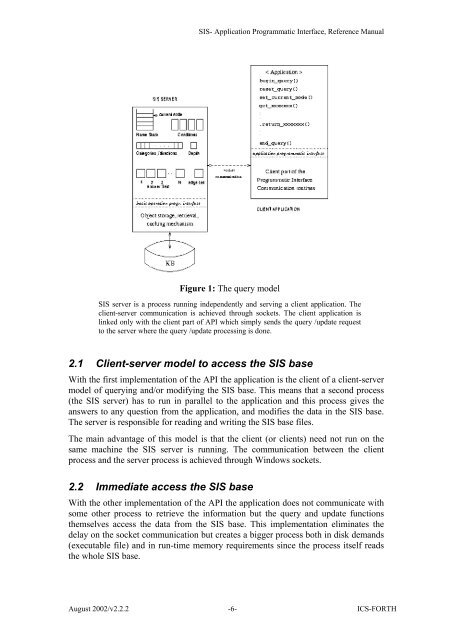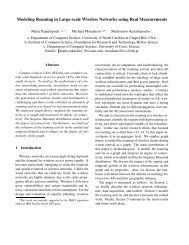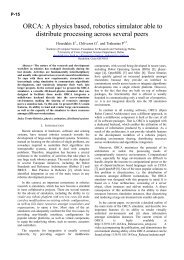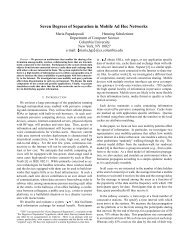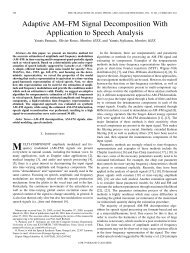SIS - Application Programmatic Interface, Reference Manual - ICS ...
SIS - Application Programmatic Interface, Reference Manual - ICS ...
SIS - Application Programmatic Interface, Reference Manual - ICS ...
You also want an ePaper? Increase the reach of your titles
YUMPU automatically turns print PDFs into web optimized ePapers that Google loves.
<strong>SIS</strong>- <strong>Application</strong> <strong>Programmatic</strong> <strong>Interface</strong>, <strong>Reference</strong> <strong>Manual</strong><br />
Figure 1: The query model<br />
<strong>SIS</strong> server is a process running independently and serving a client application. The<br />
client-server communication is achieved through sockets. The client application is<br />
linked only with the client part of API which simply sends the query /update request<br />
to the server where the query /update processing is done.<br />
2.1 Client-server model to access the <strong>SIS</strong> base<br />
With the first implementation of the API the application is the client of a client-server<br />
model of querying and/or modifying the <strong>SIS</strong> base. This means that a second process<br />
(the <strong>SIS</strong> server) has to run in parallel to the application and this process gives the<br />
answers to any question from the application, and modifies the data in the <strong>SIS</strong> base.<br />
The server is responsible for reading and writing the <strong>SIS</strong> base files.<br />
The main advantage of this model is that the client (or clients) need not run on the<br />
same machine the <strong>SIS</strong> server is running. The communication between the client<br />
process and the server process is achieved through Windows sockets.<br />
2.2 Immediate access the <strong>SIS</strong> base<br />
With the other implementation of the API the application does not communicate with<br />
some other process to retrieve the information but the query and update functions<br />
themselves access the data from the <strong>SIS</strong> base. This implementation eliminates the<br />
delay on the socket communication but creates a bigger process both in disk demands<br />
(executable file) and in run-time memory requirements since the process itself reads<br />
the whole <strong>SIS</strong> base.<br />
August 2002/v2.2.2 -6- <strong>ICS</strong>-FORTH


